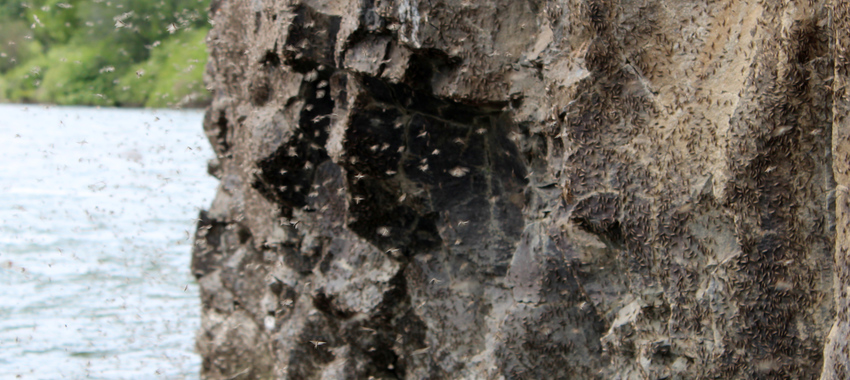Yakima River Fishing Report
May 17, 2015
The flows on the Yakima River, especially the upper reaches are as low as we may ever see them at this time of year. If wade fishing is your preferred style, then now is a great time to hit the Yakima. Because of these unique water levels, we decided to see as much of the river as we could yesterday and explore the entire system. We split our day into 3 different segments, starting on the Upper river and working our way down, finishing at dark with an evening drift in the canyon. The wind was forecast to blow at 20 mph, and that definitely was an accurate prediction!
We implemented a few key strategies for streamers, nymphs, and dries in our game plan for the day. One of the reasons we wanted to hit the Upper river is because there is a huge outbound salmon smolt migration going on right now. That 1000 cfs bump in flows last week was intended to aid in pushing them downstream on their way to the ocean. Many of the large trout in the system have taken notice of this, and they are on the lookout for this large meal! The white Sculpzilla or Dali Lama are great smolt imitations. Spring on the Yakima is a time of year that we all look forward to throwing small dries at feeding fish. The mayfly hatches (March Browns, PMD's, and BWO's) have been starting about 1 pm and going until 3 pm on the best days (calm with clouds), and the Caddis have been hatching all day, but the evening after 4 pm is when the fish really focus on eating them. Prior to seeing the adult dry flies on the surface, the nymphs are emerging subsurface. This emergence is a key window in a well rounded anglers day. These emerging insects are near the top of the water column, often within a foot or two of the surface, and that is where the fish will be sitting to eat them. Running a shallow nymph rig (bobber, and only 1-3' to single beaded fly with no shot) can be extremely productive during this window. Many anglers make the mistake of nymphing too deep in the pre hatch phase. With wind like we had yesterday, the bugs tend to cling to the bushes and rock walls (as seen in this photo!) instead of getting blown into the horizon, so you don't typically see a lot of feeding fish. The wind also makes it tough to slow the boat down and get clean drifts with small dry flies. This isn't necessarily a bad thing; however, as the fish that have been feeding on them consistently are still looking for them, and there are not many natural bugs for your flies to compete with. If you can post up in areas where you know fish have been feeding over the past few days and make some clean drifts on the foam lines, you may be surprised at what pokes its' nose out! Fly selection is important, but presentation is critical to catching fish. Fish are getting educated quickly in these low clear flows, so long drag free drifts are critical.
The river is going to stay in great shape at a very fishable level. If you've been waiting for a good report to head over, you shouldn't wait too much longer!
-
With the low water flows through out the system, water temps are going to become a major problem in a hurry. The handling of all trout, no matter what size is going to be extremely critical for their survival for the summer to come. If a picture is needed, take it with the fish in the net, in the water to keep the fish oxygenated and release a well revived trout. As the river warms, it depletes the oxygen in the river. The fish are stressed enough in warm water. "Let's Catch and Release all wild trout as if it's the last trout on earth."
-
We certainly agree, Tim. Many clients have commented this year about how great the fishing on the Yakima is, and how much it has improved in recent years. There are a number of factors to consider, but today's anglers practicing safe catch and release techniques on a broad scale is one significant reason for the improvement. At this point, we're hoping for cool weather and rain until mid June!
-
I am fairly new to the Yakima River. From what I understand, it typically maintains fairly high flows throughout the summer. Considering the unique low-water conditions right now, should we expect the river to reach its normal flows at some point over the next couple months? Thanks! -Eric
![Reds Fly Shop [logo]](/img/reds-fly-shop/logo.png)
